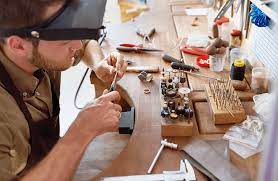Jewelry, throughout history, has been a symbol of status, beauty, and cultural significance. From ancient civilizations to modern-day fashion statements, the allure of Jewelry repair has endured the test of time. Beyond its intrinsic value, jewelry serves as a canvas for artistic expression, a reflection of personal style, and a carrier of emotional meaning. This article delves into the fascinating world of jewelry, exploring its evolution, cultural significance, and the artistry that transforms precious materials into wearable masterpieces.
Historical Evolution:
The history of jewelry can be traced back thousands of years, with evidence of adornments found in archaeological sites across the globe. Ancient Egyptians, for example, were known for their elaborate use of jewelry, with intricate designs crafted from gold, precious stones, and symbolic motifs. In ancient Rome, jewelry served as a mark of social status, and intricate pieces were often worn to display wealth and power.
During the Renaissance, jewelry became a canvas for skilled artisans who embraced new techniques, creating intricate designs that combined precious metals and gemstones. The Victorian era saw a resurgence of sentimentality in jewelry, with pieces designed to convey messages through hidden meanings and symbolism.
Cultural Significance:
Jewelry has played a pivotal role in various cultures, serving as a symbol of identity, spirituality, and societal roles. In many cultures, certain pieces of jewelry are passed down through generations, carrying with them the weight of familial history and traditions. Wedding rings, for instance, symbolize the eternal bond between spouses, while religious jewelry often serves as a visible expression of faith and devotion.



